Archaeological sites & Museums
-
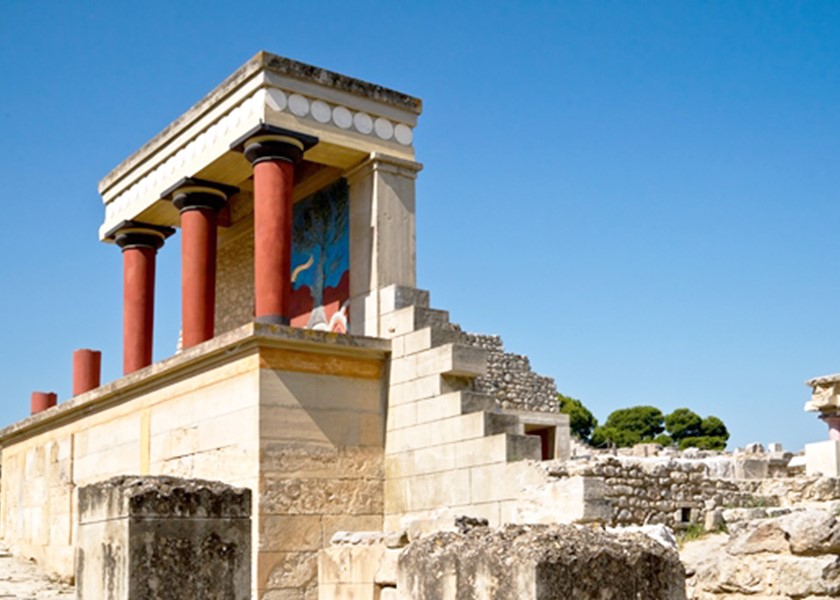
Knossos
Knossos is the site of the most important and better known palace of Minoan civilization. According to tradition, it was the seat of the legendary king Minos. The Palace is also connected with thrilling legends, such as the myth of the Labyrinth ** with the Minotaur, and the story of Daidalos and Icaros.
The site was continuously inhabited from the Neolithic period (7000-3000 B.C.) until Roman times.The Linear B tablets (Mycenaean script) of the 14th century B.C. mention the city as Ko-no-so.
Intensive habitation occured mostly in the Minoan period, when the so-called first (19th-17th centuries B.C.) and second palaces (16th-14th centuries B.C.) were built along with luxurious houses, a hospice and various other structures. After its partial destruction in 1450 B.C., Knossos was settled by Mycenaeans from the Greek Mainland.The city flourished again during the Hellenistic period and in 67 B.C. It was captured by the Roman Quintus Caecilius Metelus Creticus.
Knossos was discovered in 1878 by Minos Kalokairinos. Arthur Evans conducted systematic excavations at the site between 1900 and 1931, bringing to light the palace, a large section of the Minoan city, and the cemeteries.
(GPS: 35.298069, 25.161368 )** The mythical labyrinth of Crete does exist and even appears in the ancient maps of 1500s!!!
The Labyrinth was designed and built by the legendary artificer Daedalus for King Minos of Knossos.
Its function was to hold the Minotaur, the monster (with the body of a man and the head of a bull) eventually killed by the hero Theseus.
(GPS: 35.079691, 24.920392 ) -
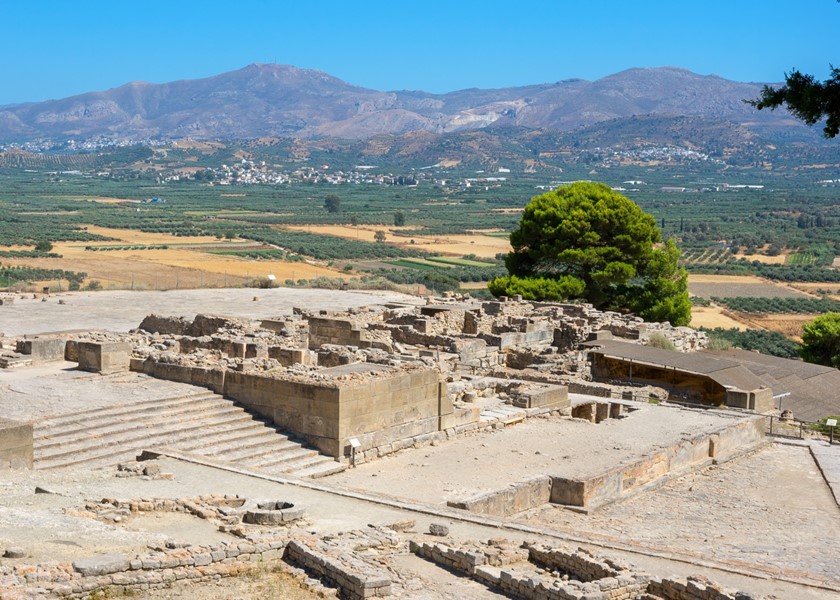
Festos
The ruins of the city of Festos (or Phaistos) lie on a hill west of Mires on the way to Tumbaki. This old palace, with basic features of Minoan architecture had been destroyed and rebuilt twice. After another disaster around 1700 B.C. the ruins were leveled and on top of them a newer palace was built whose life lasted approximately up to 1450 B.C. The central yard preserves its pavement which is dated to the Palaeoanactoric Period (1900-1700) B.C.
In the eastern wing only a small section is preserved which includes a room with skylights and purification tanks. In the northern wing lie the “royal suites”. The sacredness and formality of these suites are emphasized by the exterior wall of the central yard which has protrusions and recesses in a symmetrical layout, the nearby central entrance with half pillars, as well as the altar placed on a small flight of stairs which lies in the corner between the north and west wing. A long corridor and interior yards give access to a complex of rooms and to a larger yard with a ceramic furnace in the center.Archaeological findings from the palace are exhibited at the Museum of Heraklion, such as the famous disc of Phaistos, the large collection of vases with a variety of decorative colors and many more.
(GPS: 35.051389, 24.814119 ) -
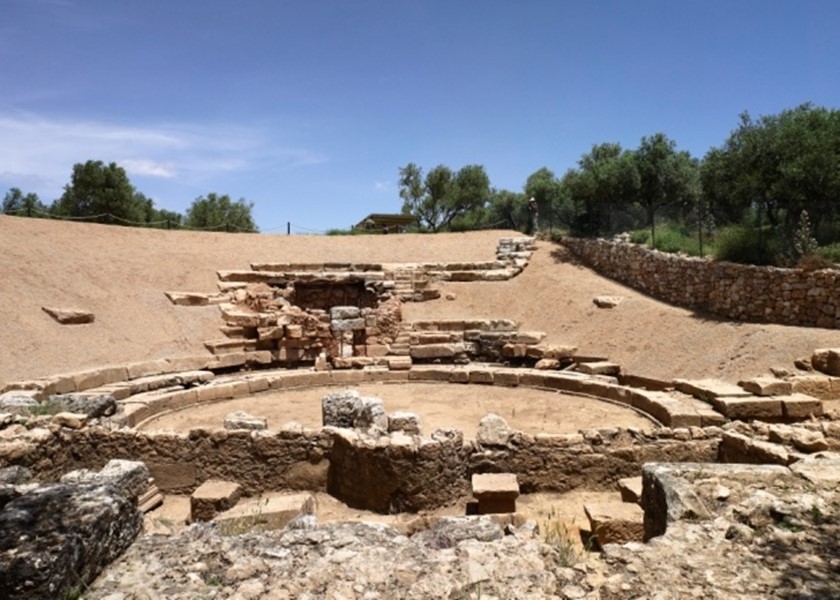
Ancient Aptera
One of the most interesting archaeological sites in western Crete, Aptera was founded in the Geometric period, although the city is mentioned in the Linear B tablets found at Knossos (A-pa-ta-wa). It reached a peak in the Hellenistic period, with intense commercial and political activity. In the Roman period, the town had a more rural character.
Its location above the bay of Souda was also strategically important: close to its two seaports Minoa (today's Marathi) and Kasteli (near Kalyves) Aptera could control the circulation of ships and it became a very important trading post in Crete and one of the greatest cities on the island.
Aptera was destroyed in the great earthquake of 365 AD and only sparsely inhabited afterwards but a Late Byzantine monastery dedicated to Hagios Ioannes Theologos (St. John the Theologian) remained amidst the ruins.The most important monuments of the site are:
- The Roman cisterns
- Bipartite temple, known as the "bipartite sanctuary", dated to the 5th-4th century BC
- Graves of the Geometric-Roman periods
- The fortification walls, preserved to a length of almost 4 kilometres. The main phase of construction belongs to the 4th century BC.
- The Roman bouleuterion
- The Turkish fortress "Koules" built in 1866-1869
(GPS: 35.462780, 24.142078 ) -
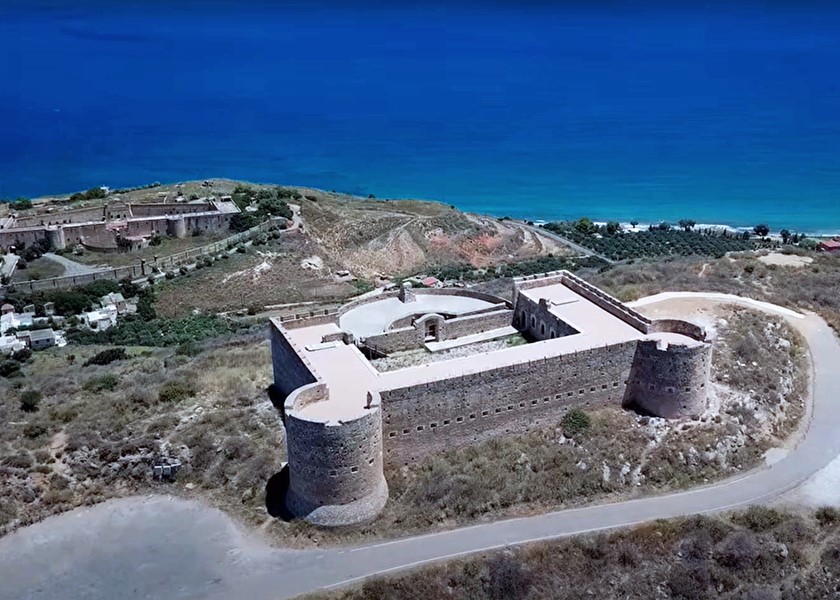
Aptera «Koules» Fortress
The koules fortress is located 12km east of Chania near the Paleokastro region, pretty near to the Kalami village and on the relics of ancient Aptera.
The fortress was built by the Turks after the Cretan revolution in 1866, during the effort to control Crete again. It is a representative sample of fortress architecture of 19 th century. The purpose of its location was to control Souda port and the Apokoronas valley where used to be the passage to Chania.
The Koules of Aptera is saved until today in a great condition.It is equipped with two towers that are heading to the west ( to control the Kerameia passage) and the east ( towards Kalyves).The first was communicating with the Souda fortress and the koules of Kalyves and Nio Chorio.
The fortress was the biggest fortification establishment of its period and was including spaces that were developing symmetrically in a shape of Π to form a rectangular yard. The circular towers are on the southwest and southeast corner of the fortress, while the central gate is located at the east side well protected by a recess.
The soldiers used to get to the battlements of the Koules chamber through inside wooden stairs. The fortress was equipped with all the necessary barracks spaces, lodging infrastructure, warehousing, imprisonment, food preparation and restauration. The great condition of the fortress is due to the excellent building of its walls.
Koules after the retreat of the Turks from Crete was used as a school for the Megala Chorafia village.
(GPS: 35.465624, 24.147461 ) -
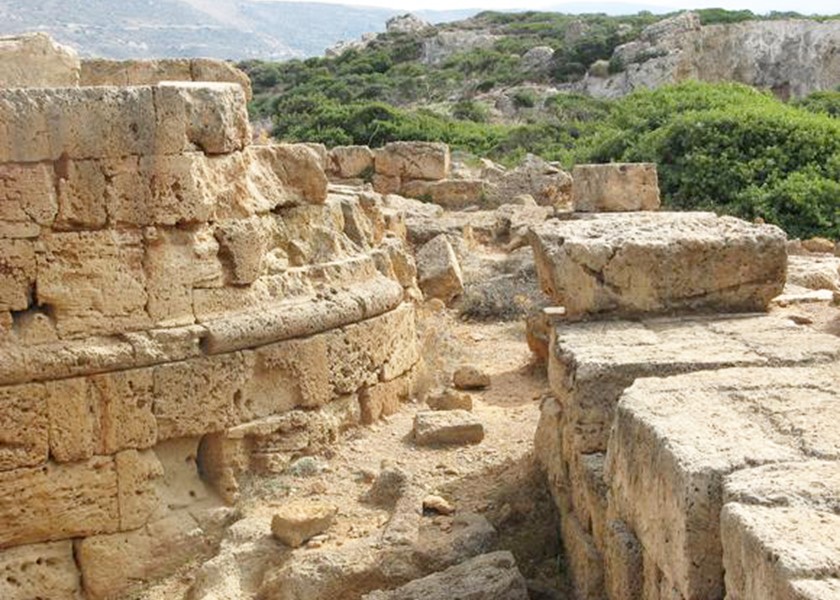
Ancient Falasarna
Dorians founded Phalasarna around the 7thcentury BC on thefar West of Crete on Cape Koutri of the Grambousa peninsula. From this spot they controlled the sea routes towards northern Africa and Italy. Their city-state had laws and a political system that led to the development of a progressive community. The strength of the local economy rested on skill in navigating the sea, which led Phalasarna eventually to become a naval power.
In the 4thcentury BC, Phalasarna fortified the city with huge walls and other military buildings. Ancient geographers described the “closed harbor”, which the Phalasarnians carved out of a lagoon, and surrounded with quays and defensive towers.
The harbor design has Phoenician elements, and the famous “throne” of Phalasarna, which one today sees on the road traveling towards the archaeological site, was probably dedicated to the Phoenician goddess Astarte, protectress of sailors.
The Phalasarnians traded with people all across the Mediterranean and must have had close relations with the Phoenicians. They also were famous as warriors; their skill in battle made them rich as mercenaries, and history mentions Phalasarnians as leaders of military campaigns of Greek kings.
(GPS: 35.511409, 23.570340 ) -
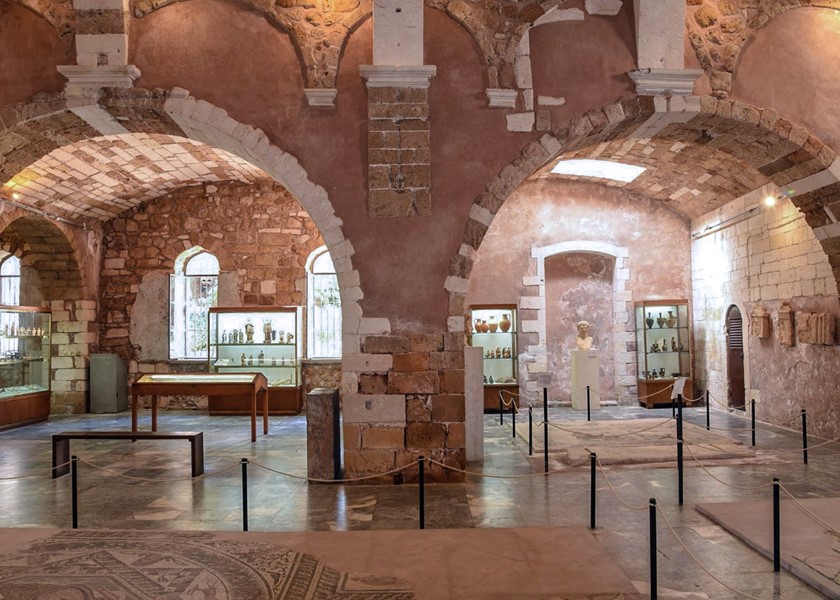
Archaeological Museum of Chania
The Archaeological Museum of Chania has been housed in the church of the Venetian Monastery of St Francis since 1963.
The exhibits illustrate the cultural history and character of the area through the ages, from the Neolithic period to the Roman era. The findings are presented in excavation groups and thematic units from the Late Neolithic period, the Bronze Age (Minoan era) and the Iron Age (Historic era). The collections comprise Minoan finds from the city of Chania, prehistoric finds from caves, Minoan finds from various parts of the Prefecture, finds from tombs of the Geometric period, finds of the Historic era from Chania and various other towns and cities in the Prefecture, coins, prehistoric and historic jewellery, sculptures, inscriptions and mosaics.
(GPS: 35.515714, 24.017775 ) -
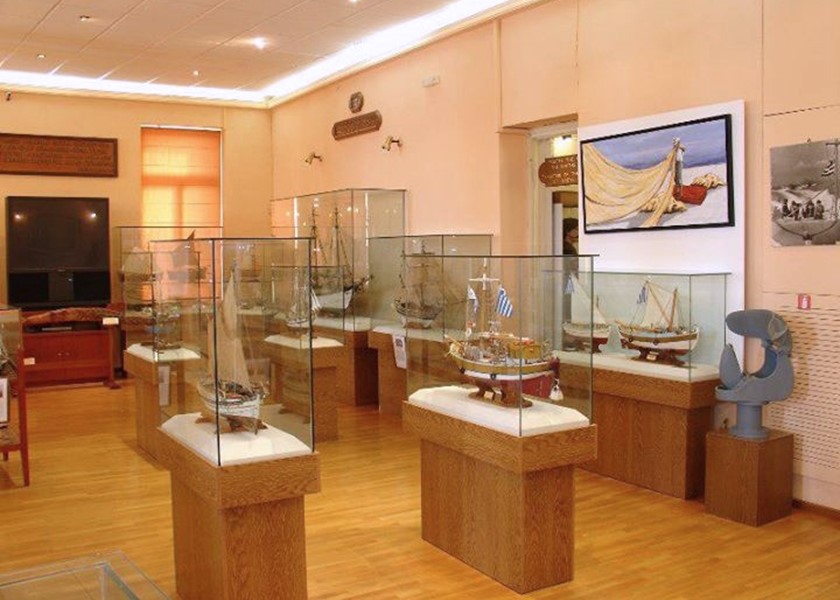
Marine Museum of Crete in Chania
The Museum was inaugurated on the 27th May 1973, date of the 32nd anniversaryof the Battle of Crete.
It includes models of ships, various nautical instruments and objects such as range finders, barometers, wind-gauges, course and speed abaci, torpedo firing computer, magnetic boat compasses, meteorogical instruments, sextants, a planisphere, torpedo-boat steering gear, etc. There are also paintings, portaits, authentic historic photographs, such as the raising of the flag of the Union of Crete with Greece in the Firka fortress at Chania, on the 1st December 1913, etc. Also exhibited are relics such as uniforms and other memorabilia which belonged to the heroic dead of the Greek Navy, guns which had been used in the war of 1912-13, etc.
All the exhibits from the naval tradition of Greece are classified according to their historical periods, that is:Bronze age-Classical and Hellenistic (2800 BC-6th century AD). Venetian period (1200 AD to the 17th century), Byzantine and post-Byzantine period (650 AD to the 18th century), the period of the Ottoman rule-the struggles for Independence (1650-1909), the Balkan Wars (1912-1913), World War II (1940-1944), the post-War period (after 1944).
(GPS: 35.517954, 24.016031 ) -
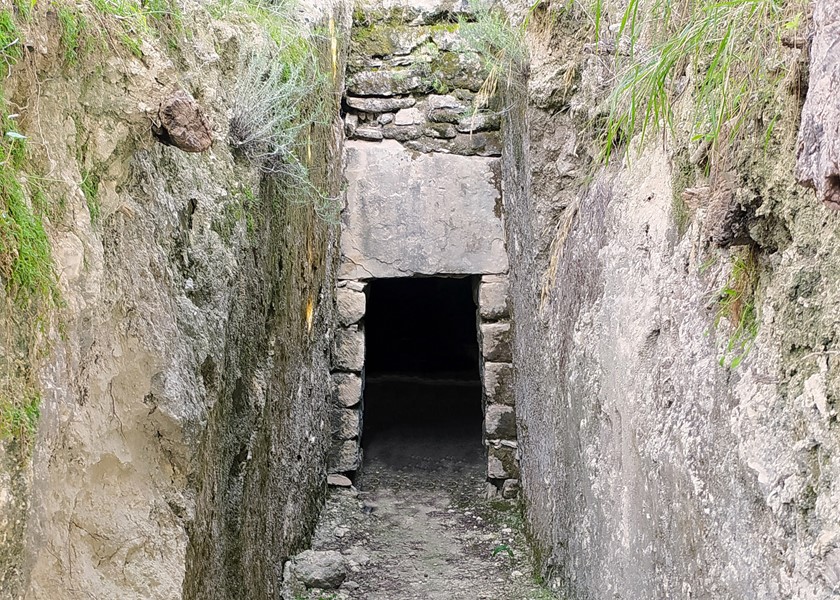
Tholos, tomb of Phylaki
The “Tholos tomb” was discovered in 1981 a kilometer or so from the village of Phylaki. The Tholos is approached by a narrow, deep dromos 11 meters long.
Inside the tholos the chamber is almost square. The chamber measures 3,40 by 3,65 meters and it has a pyramidal vault. The chamber is lined with well-worked, rectangular, pieces of limestone.
At least nine burials were found in poor condition inside the tomb and there was also evidence of burning, which suggests that animal sacrifices may have taken place in honor of the dead.
The most important finds in the tomb include: ivory decorations from a wooden box, including the heads of warriors wearing boar's tusk helmets(GPS: 35.318377, 24.316816 ) -
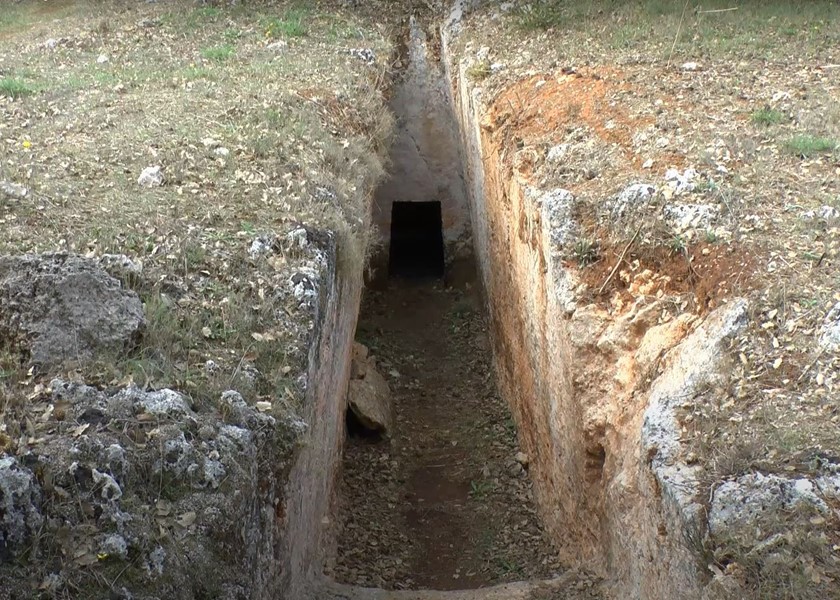
Late Minoan Cemetery «Necropolis» of Armeni
In 1969, two pupils presented to the Archaeological Museum of Rethymnon two vases found at the site called Prinokephalo, at the community of Armeni. Investigation of the area prooved the existence of an extensive Late Minoan cemetery. Since then, the site has been systematically excavated, and more than 220 tombs have been brought to light.
The Late Minoan III cemetery of Armeni is located 8 kilometres south of Rethymno on the road to Spili and Ayia Galini. In this magnificent «Necropolis» over 220 chamber tombs and one tholos tomb have so far been discovered.
The layout of the cemetery seems to have been pre-planned. They were all family tombs, containing multiple burials, either placed directly on the floor or inside larnakes. The grave offerings - pottery, weapons, tools and jewellery - provide us with useful information on art, religion and social organization of the period.
A network of paths ran through the cemetery. The paths were wide enough for carts carrying larnakes to pass. Smaller and larger tombs, which have been identified as the resting places of respectively the higher status and lower status deceased, were, at least initially, kept separate from each other.
There were three types of chamber, circular, semi-circular and rectangular with a low bench along one or more of the walls. The most imposing tomb (number 159) had a «dromos» of 15.50 metres and a staircase with 25 steps. The entrance to the chamber was two metres high, the size of a normal doorway.
(GPS: 35.317989, 24.463363 ) -
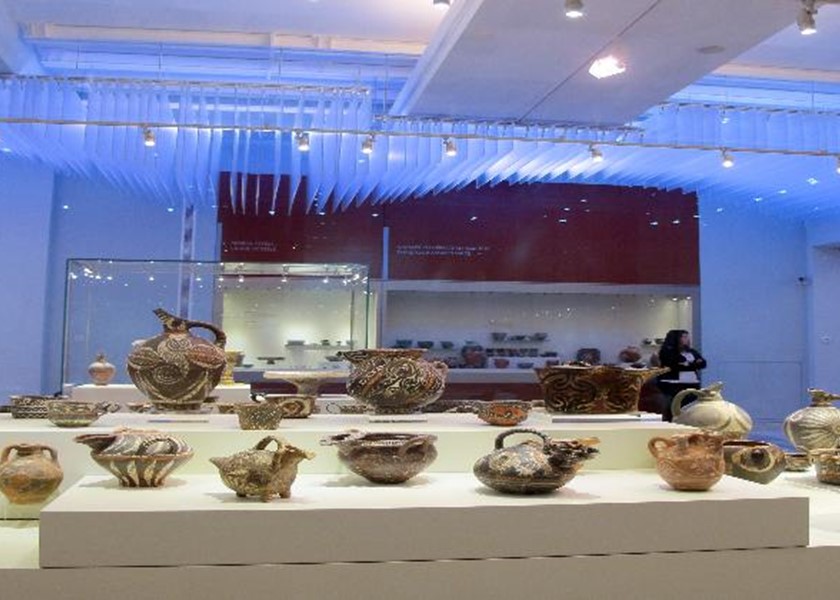
Archaeological Museum of Heraklion
The Heraklion Archaeological Museum is one of the largest and most important museums in Greece, and among the most important museums in Europe. It houses representative artefacts from all the periods of Cretan prehistory and history, covering a chronological span of over 5,500 years from the Neolithic period to Roman times. The singularly important Minoan collection contains unique examples of Minoan art, many of them true masterpieces. The Heraklion Museum is rightly considered as the museum of Minoan culture par excellence worldwide.
(GPS: 35.339100, 25.137041 ) -
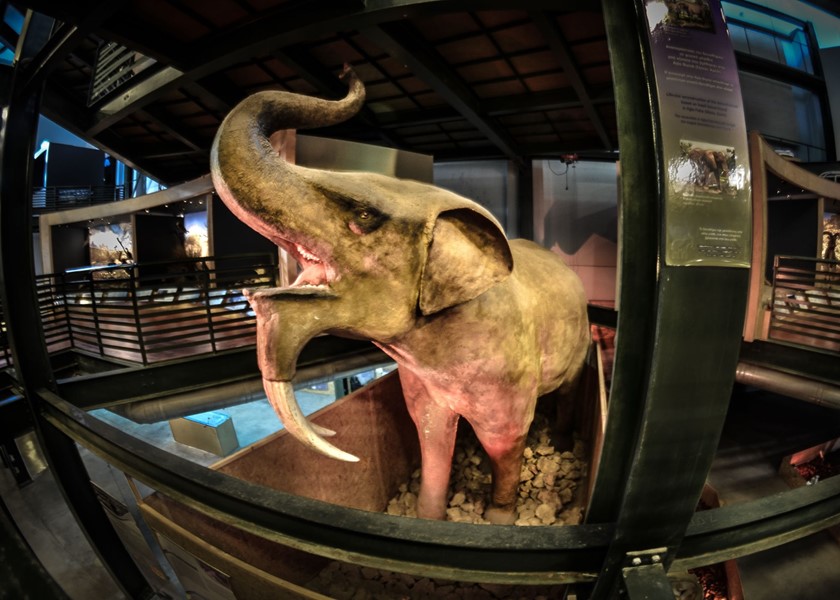
Natural History Museum of Crete in Heraklion
The Natural History Museum of Crete in Heraklion with an area of 3,500 m2, it is the largest exhibition of its kind in the Mediterranean, showcasing the natural environment of Crete and the wider Mediterranean area in an innovative, original way. Visitors have the opportunity to explore Cretan ecosystems alongside their equivalents in mainland Greece. Other areas are dedicated to exhibits such as the Giant Deinotherium, the largest prehistoric animal ever to live on Crete, the Living Museum, a display of typical animals of Crete and the Mediterranean and the Enceladus- an earthquake simulator where one can experience several earthquakes known to have occurred in different areas in the past. Since 2016 there also three temporary exhibitions; "Dinosaurs extreme", with real-size reconstructions of dinosaurs with extreme characteristics, e.g. the largest, the smallest, the oldest, the fastest and of course the famous T-rex.
(GPS: 35.341758, 25.126918 )
Contact Details
-
Orpheas Resort
- Kavros, Gergiopoupolis, 73007, Crete, Greece
- Tel: +30 28250 61218
- Fax: +30 28250 61007
- Email: info@orpheas-resort.gr
- ΜΗ.Τ.Ε. 1042K014A0172200

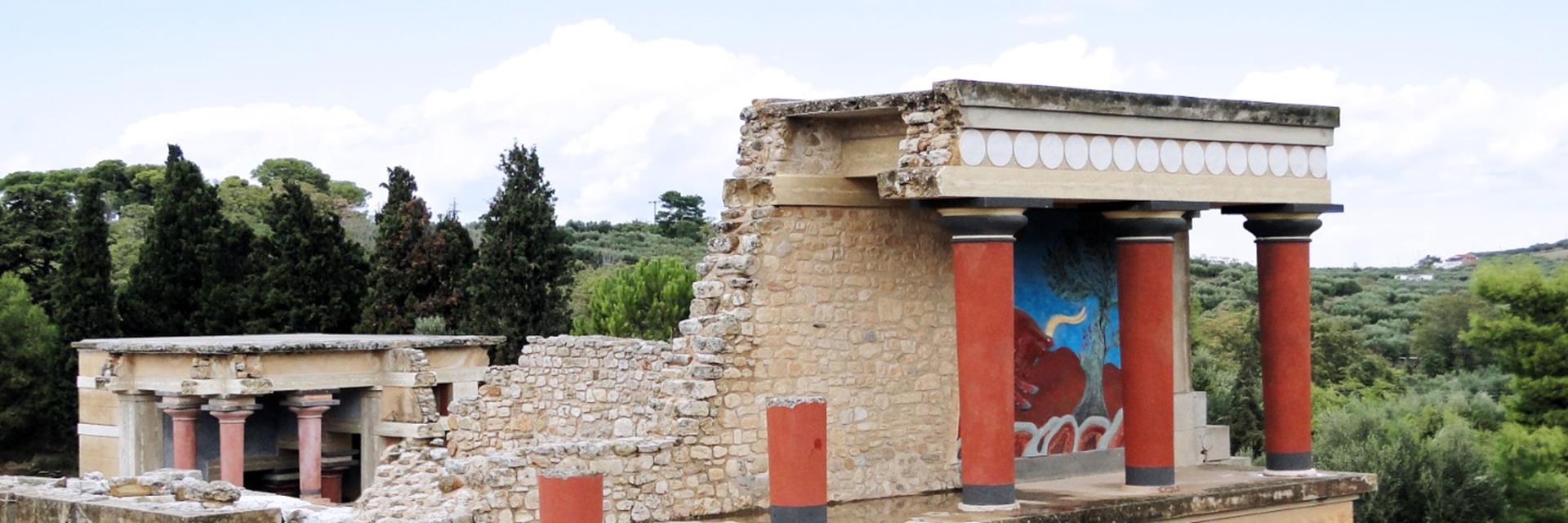






Connect With Us